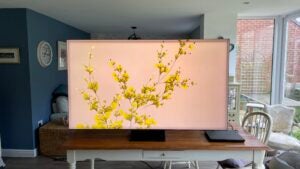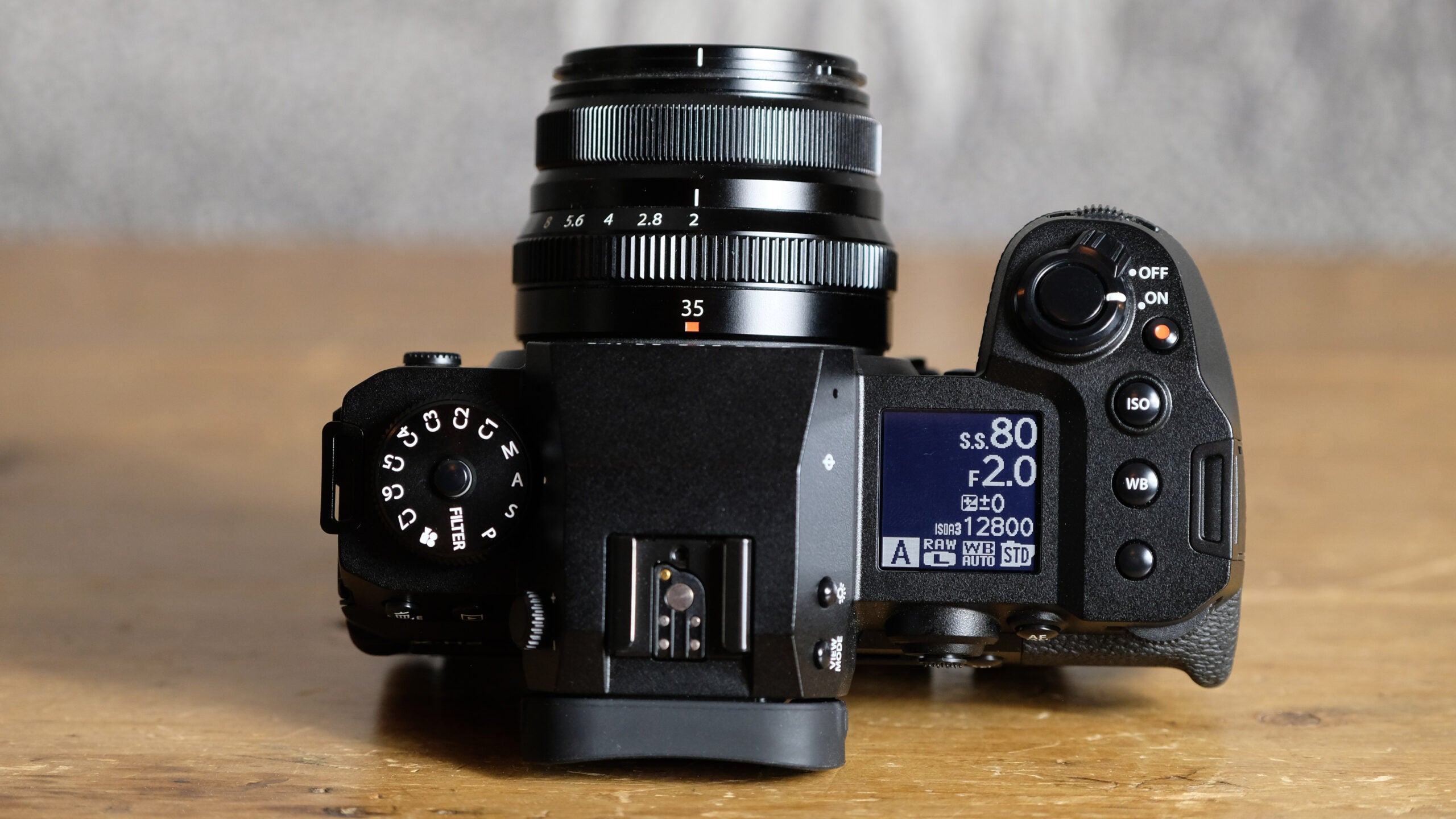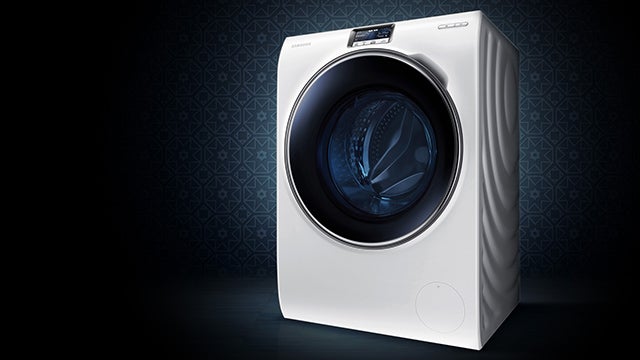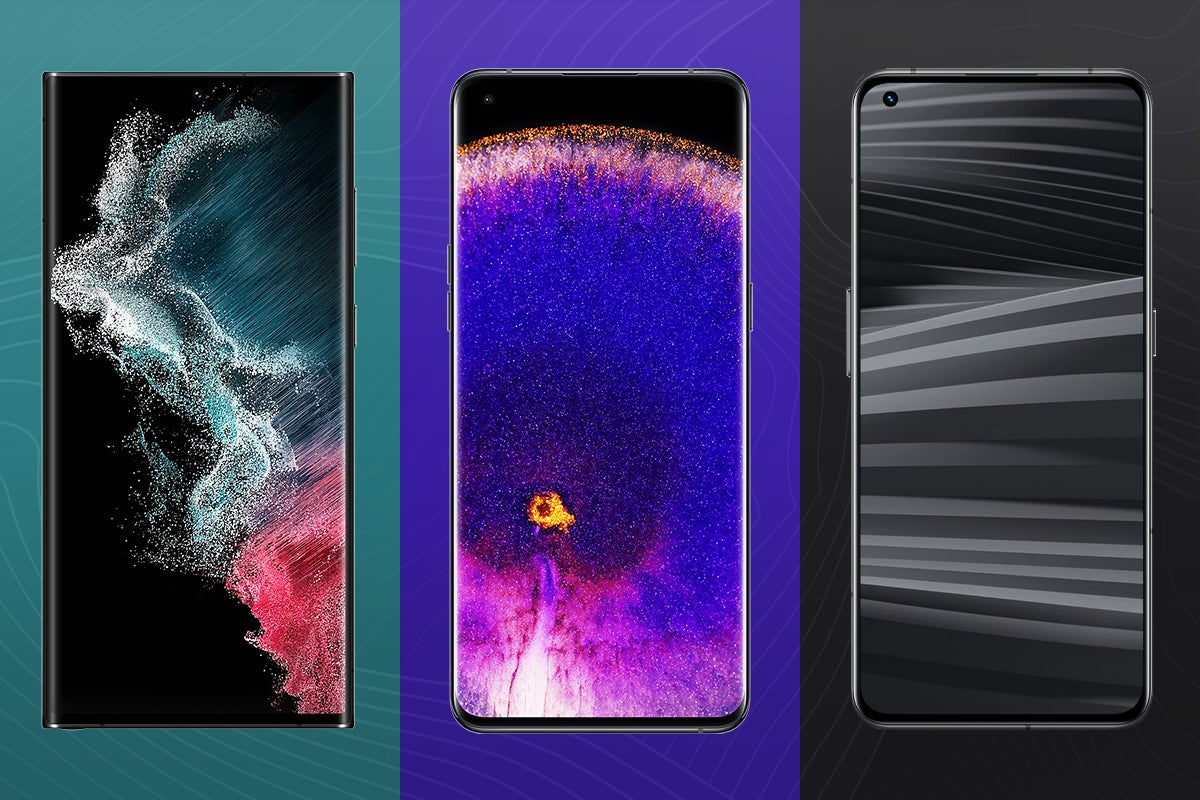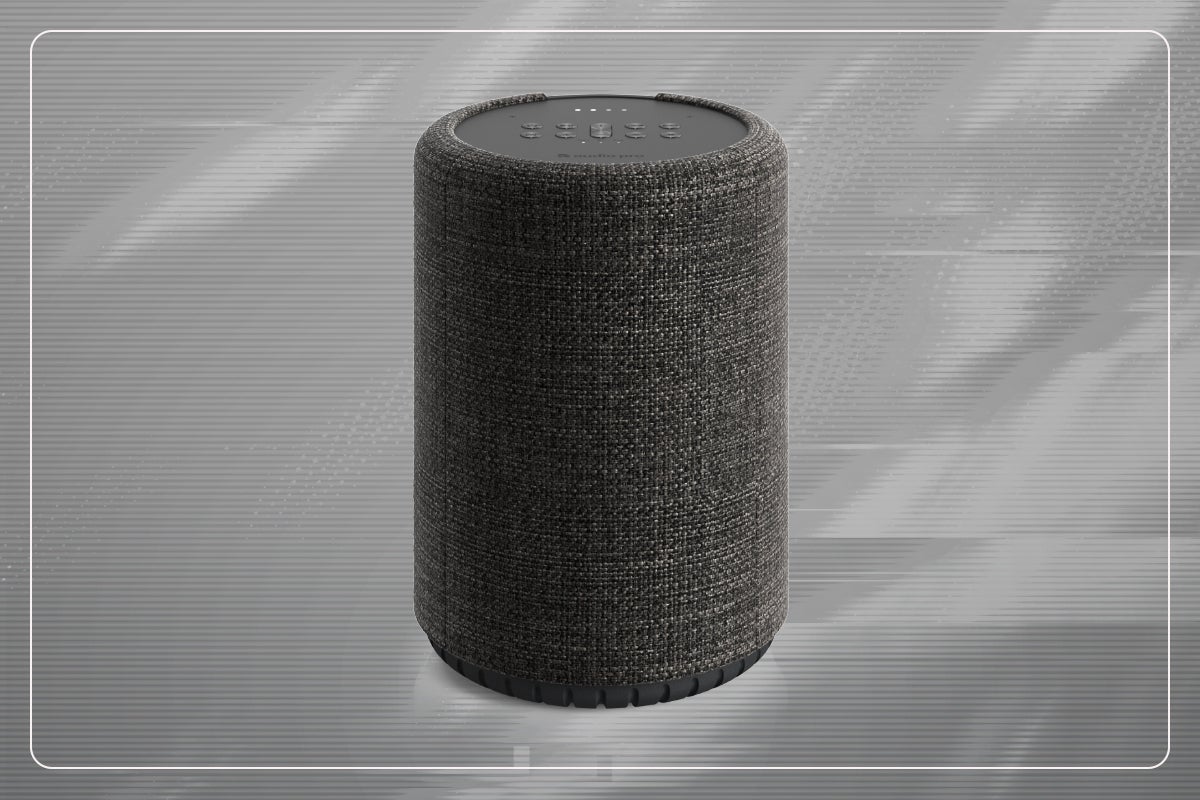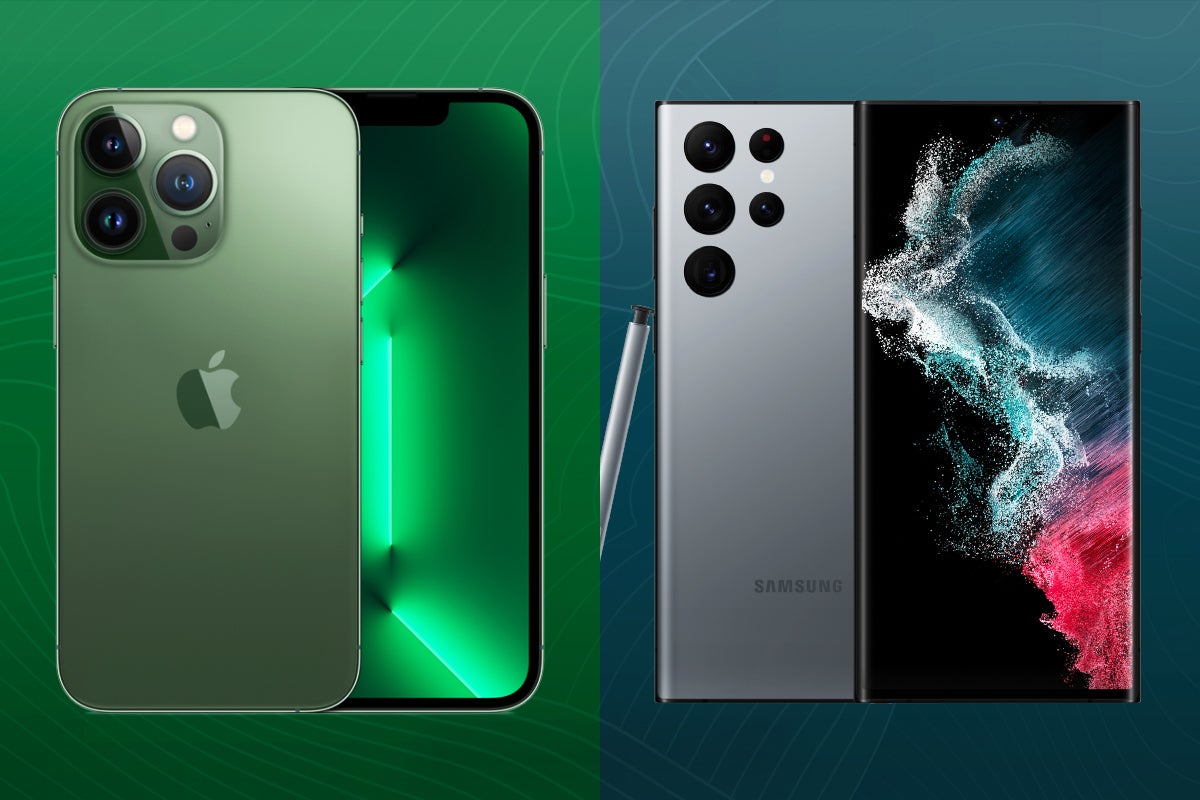Best Samsung TV: The best 4K and 8K models

In terms of sales, Samsung is the biggest TV manufacturer in the world, so it’s likely that if you’re looking for a new TV, it’s going to be a Samsung TV.
We’ve reviewed more than our fair share of Samsung TVs, and we adopt a thorough process in assessing the merits of each TV. We use calibration discs such as Spears and Munsil to test TVs, as well as using devices such as a Leo Bodnar input lag tester to accurately test input lag for games.
We focus on areas such as picture quality, how good its built-in speakers sounds, well as its feature and the build quality of the unit.
If, however, a TV from Samsung doesn’t tickle your fancy, be sure to check our lists of the best LG TVs, as well as the best Panasonic TVs and selection of the best TVs in general.
Best Samsung TV at a glance
- Best Samsung 8K TV: Samsung QN900D – check price
- Best Samsung 4K TV: Samsung QN95D – check price
- Best Samsung OLED TV: Samsung S95D – check price
- Best Samsung mid-range TV: Samsung Q80D – check price
- Best big Samsung TV: Samsung QE98Q80C – check price
How we test
Every TV we review is put through the same set of tests to gauge its picture performance, usability, and smart features.
Tests are carried out over several days and are done by eye but supported with technical measurements. Testing by eye involves an expert watching a wide range of material to understand and determine a TV’s performance in fields such as brightness, contrast, motion processing, colour handling and screen uniformity.
We’ll consider the design of the TV in terms of build quality, study the spec sheets and see if the TV’s connections are up to spec, as well as playing video and audio content to ensure that the set handles playback as it claims. We also take note whether a product’s compatible formats and features are in line with industry trends or not to gauge whether it’s relevant for you.
Comparison to other related and similarly priced products is also important, to see if it’s missing any vital features and whether it impresses as a whole. After all this, we’ll come to a judgement on how the TV performs as a whole.
If you want to learn more, please visit our detailed page about how we test televisions.
- Outstanding 8K and upscaled 4K pictures
- Impressive brightness and power management
- Spectacular design and excellent connectivity
- It puts a serious dent in your bank account
- Some backlight distractions in Standard mode
- Sounds a bit feeble for such a premium TV
- Stunning brightness and contrast
- Outstanding gaming support
- Beautiful futuristic design
- Some slight instability with HDR in Standard mode
- No Dolby Vision HDR support
- Slight black crush, especially in Standard mode
- Good price for such a huge and effective TV
- Impressive black levels and local dimming
- Excellent gaming support
- Blooming becomes visible when viewing off axis
- Sound not as powerful as such a big TV deserves
- No Dolby Vision support
- Excellent picture quality
- Extensive gaming features and strong gaming performance
- Strong smart features and processing
- No Dolby Vision HDR support
- Some out of the box colour errors
- Some minor backlight inconsistencies
- Spectacularly bright, contrast-rich pictures
- Excellent upscaling of sub 4K pictures
- Comprehesive smart system
- No Dolby Vision support
- Flawed Standard preset
- Audio lacks a little volume and bass

Samsung QE75QN900D
Best Samsung 8K TV
Pros
- Outstanding 8K and upscaled 4K pictures
- Impressive brightness and power management
- Spectacular design and excellent connectivity
Cons
- It puts a serious dent in your bank account
- Some backlight distractions in Standard mode
- Sounds a bit feeble for such a premium TV
Samsung still believes that 8K will take off, and with its QN900D, it’s certainly putting its best foot forward to bring the format to a wider audience.
It is without doubt the best 8K TV that we’ve reviewed from Samsung, and considering they regularly get five-star awards, that’s an impressive feat. Improvements have been made to how much brightness the TV is capable of, with the QN900D able to produce 2445 nits on a 10% window in its Movie mode, which is much brighter than the 2096 nits the QN900C was capable of.
That level of high brightness helps to produce impressively bright and colourful HDR images, though as always with Samsung, we still find the lack of Dolby Vision support to be disappointing considering how widespread it is.
The upscaling performance is brilliant, and with little native 8K content out there it has to be. We noticed a big jump up in detail with 4K content, with Samsung’s AI processor able to bring out all the detail within an image and sharpen it without producing a fake-looking image or overemphasising any noise in the image. It genuinely looks better than any 4K TV we’ve seen.
For the gamers out there, our reviewer measured input lag at a fast 11ms, and with VRR support in HDMI VRR and AMD FreeSync Premium Pro, the input lag can be brought down ever further. All four of its HDMI inputs supporting 4K 120Hz gaming, so you’ll get a high level of gaming performance with any of the HDMI inputs.
We would suggest leaving the eARC input to add in a soundbar. While the QN900D’s sound system tracks sounds accurately across the screen, it’s not able to generate enough bass to give soundtracks heft and excitement.
Reviewer: John Archer
Full Review: Samsung QE75QN900D

Samsung QE65S95D
Best Samsung OLED TV
Pros
- Stunning brightness and contrast
- Outstanding gaming support
- Beautiful futuristic design
Cons
- Some slight instability with HDR in Standard mode
- No Dolby Vision HDR support
- Slight black crush, especially in Standard mode
After nearly 10 years of ignoring OLED technology, Samsung decided to create its own panel technology in QD-OLED and with the S95D it’s arguably struck gold.
The first and second-gen QD-OLEDs from Samsung were enjoyable, though we found they had flaws. The S95D appears to be a big improvement on what came before. It is the brighest OLED TV we’ve reviewed yet, hitting 1798 nits on a 10% window that’s more than the likes of the Panasonic MZ2000 and LG G3 OLED
That level of brightness helps the TV produce incredibly rich colours with contrast that brings out the detail in both dark and light areas of the image. Our reviewer also felt that the anti-glare screen technology was impressively implemented on this TV, though it does mean that dark areas do take on a slightly grey appearance.
The Tizen interface has been refined with new sections to help recommend suitable content that matches your tastes, and there’s now the option of creating multiple profiles for multiple in the house. For the gamers out there we measured input response at 9.8ms, while all four HDMI 2.1 inputs support 4K 120Hz through the One Connect box and with 144Hz supported for PCs.
The sound system supports Dolby Atmos, and like with Samsung’s other OTS speaker systems, it can be very good at placing effects on and around the screen. However, it can’t push that sound forward into a room, and volume is a little limited in terms of how loud it can do.
Reviewer: John Archer
Full Review: Samsung S95D OLED

Samsung QE65QN95D
Best Samsung 4K TV
Pros
- Spectacularly bright, contrast-rich pictures
- Excellent upscaling of sub 4K pictures
- Comprehesive smart system
Cons
- No Dolby Vision support
- Flawed Standard preset
- Audio lacks a little volume and bass
The Samsung QE65QN95D is the brand’s flagship 4K TV for 2024, offering a few improvements over TVs that came before it such as the QN95B and QN95C.
The number of dimming zones remains the same (1344) and brightness is around the same (2120 nits), but the big difference to the overall picture quality is the new processor, which helps to upscale to non-4K images in a clean, crisp, and natural way thanks to its ability to tell the difference between actual detail and noise.
With 4K HDR content, the TV pumps out rich and vibrant colours, combined with a fantastically sharp and detailed picture. For an LED TV that contrast is fantastic, with the QN95D able to produce the most convincing black levels we’ve seen on a TV of this type.
As a gaming television, all four of the HDMI inputs support 4K/144Hz, so gamers don’t have to pick and choose which devices go into which HDMI input. There’s HDMI VRR for gaming consoles, with PC gamers getting AMD FreeSync Premium Pro. We measured input lag to 9.8ms, which is the same as the QN95C and Q80D TVs.
The speaker system is solid rather than spectacular. It offers power, clarity and space, while the Object Tracking Sound (OTS) system plants effects on screen with accuracy. Bass and volume remain a little limited, so you won’t want to stress this TV too much.
Reviewer: John Archer
Full Review: Samsung QE65QN95D

Samsung QE55Q80D
Best mid-range Samsung TV
Pros
- Excellent picture quality
- Extensive gaming features and strong gaming performance
- Strong smart features and processing
Cons
- No Dolby Vision HDR support
- Some out of the box colour errors
- Some minor backlight inconsistencies
The Q80D is where Samsung’s 2024 TV range splits from premium Neo QLED sets and the QLED models. The Q80D is the latter, featuring a Full-Array Local Dimming panel for contrast, brightness, and black levels.
What that means compared to the QN95D is that this model doesn’t boast as many dimming zones for the same level of precision when it comes to contrast and peak brightness, but the upside is that it’s available for less. In the UK this 55-inch model is available for less than £1000.
Build quality is good, but the lack of the Mini LED panel means that this TV is chunkier the QN95D but unless you care about aesthetics that shouldn’t be an issue. The central plinth it stands on is compact, alowing it to be perched on stands big and large, with an area in the back of stand to filter cables through to keep the rear area tidy.
Gamers benefit from VRR support to improve visuals and latency, with the Q80D’s input lag registering a speedy 9.8ms in our tests. The Game Hub also drags in all gaming sources, whether it’s a game console and cloud gaming, into one place to keep track of your gaming habits. HDR support equates ot HDR10, HLG, and HDR10+, and as per usual with Samsung there’s no Dolby Vision. There is Dolby Atmos support, along with Q Symphony which combines the TV’s speakers with that of a compatible Samsung soundbar for a bigger presentation.
And even though this TV doesn’t have the dimming zones or peak brightness of the flagship QN95D, it offers excellent black levels and contrast, vibrant colours, and impressive levels of detail. We also find the built-in sound system to be a decent one for a TV, offering a large sound stage and distortion-free bass. For a mid-range TV, the Q80D’s offering performance is an outstanding one.
Reviewer: John Archer
Full Review: Samsung QE55Q80D

Samsung QE98Q80C
Best big Samsung TV
Pros
- Good price for such a huge and effective TV
- Impressive black levels and local dimming
- Excellent gaming support
Cons
- Blooming becomes visible when viewing off axis
- Sound not as powerful as such a big TV deserves
- No Dolby Vision support
Big screen TVs are becoming more popular and there aren’t many screens as big as the QE98Q80C from Samsung.
At a whopping 98-inches, this is a TV that takes up a lot of space in any home, and because of its size it’s a screen that feels more like a cinema that it does a TV. It’s surpisingly slim for a big screen though, which itself features just 120 dimming zones for control of brightness. As always, it’s not the number of dimming zones you have but what you do with it that’s most important.
And this big-screen Q80C is capable of bright and colourful images, with dark scenes that appear black and little backlight clouding or blooming that our reviewer spotted. Upscaling is very good for a screen of this size, the processor doing an effective job of upscaling HD images to this size, while SD images can look a little stretch, that’s only to be expected considering the quality of the source.
There are four HDMI 2.1 inputs on this model, and all can handle 4K/120Hz sources. We measured input lag at 10.7ms which shoudl ensure a snappy performance even before VRR support comes into play.
Tizen is not the easiest to navigate in terms of its settings, but it is comprehensively stacked for apps with all the apps you could want available. You won’t need to purchase a streaming stick to get the video streaming apps you want.
Sound quality is fine with good detail and effects accurately placed around the screen. The main issue is that this screen doesn’t get particularly loud or be able to generate the kind of power and scale a screen of this size should command. There are decent bass levels to to help amp up excitement in action films, but we’d recommend getting a soundbar for this screen.
Reviewer: John Archer
Full Review: Samsung QE98Q80C
We also considered…
We’ve reviewed
See all reviewsFAQs
No, Samsung does not support Dolby Vision HDR, instead preferring to support HDR10, HDR10+ and HLG formats.
There’s no support for Freeview Play on Samsung TVs, though all the UK catch-up and on-demand apps are available individually. Samsung offers its TV Plus channels as an alternative to Freeview Play.
Officially, Samsung TVs are not certified for G-Sync gaming. Unofficially, you can play G-Sync compatible games but they will not have been optimised for Samsung’s TVs.


